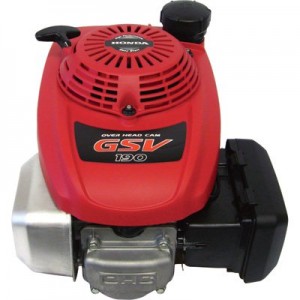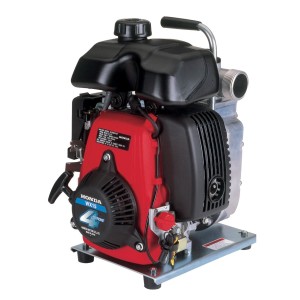At 20 lbs, the WX15X is perfect for small jobs from garden irrigation to draining the bilge on small boats. Here’s what you need to know to get the most from this water pump.
What Will the WX15X Pump?
This pump is designed to pump fresh water. Pumping corrosive liquids like seawater and mine runoff will damage the pump, while pumping flammable liquids including gasoline and diesel can cause a fire or explosion.
This is a dewatering pump, so it can handle water with solids up to 3/8 of an inch (10 mm) in diameter. It’s strong enough to pick up muck water, so it’s safe to use when draining ponds.
Pump Location
The WX15’s maximum total head is 121 feet under ideal conditions. Suction head can be no more than 26 feet, and may be less in high altitude operation. When setting up the pump, position it so that it is close to the surface of the water, making up the difference in height to the drainage point by using the discharge hose. Reducing suction head will reduce the time the pump takes to self-prime.
Keep the pump at least three feet away from building walls and other equipment. Heat coming off of the engine could start a fire, and confined spaces can concentrate poisonous carbon monoxide from the exhaust.
Hoses
Both the suction and outlet ports are 1.5 inches in diameter. The suction port should be used with a 1.5-inch diameter non-collapsible hose. The outlet can be connected to a standard hose that is at least 1.5 inches in diameter. Using a wider hose will reduce fluid resistance, improving performance. The shorter the hoses are, the better the pump performance will be.
Hose clamps are included with the pump, but separate hose connectors will be needed to mate the hoses to the pump housing. Inspect the packing inside the hose coupling before installation. If this part fails, there won’t be a good seal between the hose and the pump port.
The suction hose should always be fitted with a strainer to keep large debris from reaching the pump and damaging the impeller. A basket strainer is included with the WX15X, but a skimmer strainer is a better choice if you need to completely drain a body of water.
If the discharge hose needs to cross a road, run it directly from one side of the road to the other. Place boards along the hose to support vehicles crossing the road: this will keep the tires from pushing down on the hose and cutting off water flow, which can damage the pump.
Priming
Before starting the engine, water needs to be added to the pump chamber to prevent overheating and seal damage. If the engine is accidentally started with a dry pump, shut it off immediately and let the pump cool off before priming and restarting.
To prime the pump, remove the cap on top of the pump housing. Add water until it’s even with the bottom of the pump outlet, then reinstall the filler cap. Once the engine is running, it can take a couple of minutes for the pump to draw water through the hoses.
Starting the Engine
1. Move the fuel valve lever, located to the right of the air box, to the “ON” position.
2. If the engine is cold, move the choke lever, located above the air box, to the “CLOSED” position. If the engine was recently started, leave the choke in the “OPEN” position.
3. Move the throttle lever, located below the fuel lever, halfway between “SLOW” and “FAST.”
4. Turn the ignition switch to the “ON” position.
5. Hold the carrying handle and pull the starter grip.
6. As the engine warms up, gradually move the choke to the “OPEN” position.
Stopping the Engine
1. Move the throttle lever to the “SLOW” position.
2. Turn the ignition switch to the “OFF” position.
3. Turn the fuel valve to the “OFF” position.
After Use
Once the engine is off, remove the drain plug on the base of the pump and the priming cap on the top of the pump. Pour fresh water into the pump to flush out any dirt or debris. Once all the water has drained, reinstall the plug and cap.
Get the Parts and Accessories You Need for Your Honda Water Pump
Hondalawnparts.com can ship OEM parts and accessories for you WX15X to your door whether you live in the U.S. or Canada. We carry the full line of Honda water pump accessories including hoses, strainers, and clamps as well as parts like spark plugs and pump seals. Browse our pump accessory section to find the right combination of hoses and adapters to fit your needs, or search by pump model and serial number to find compatible parts for your pump.




